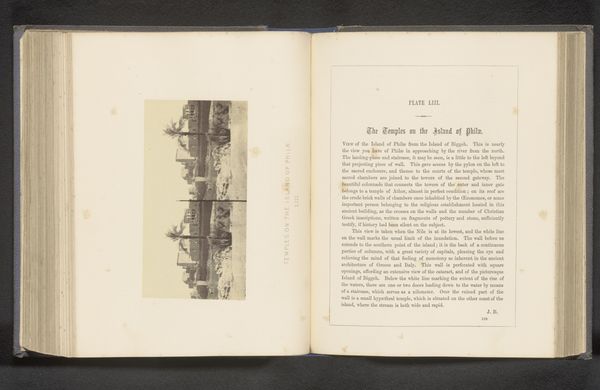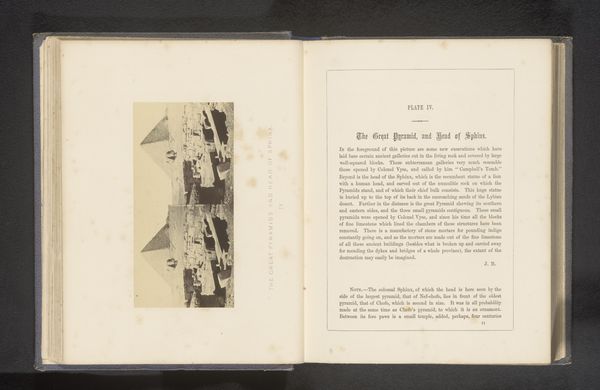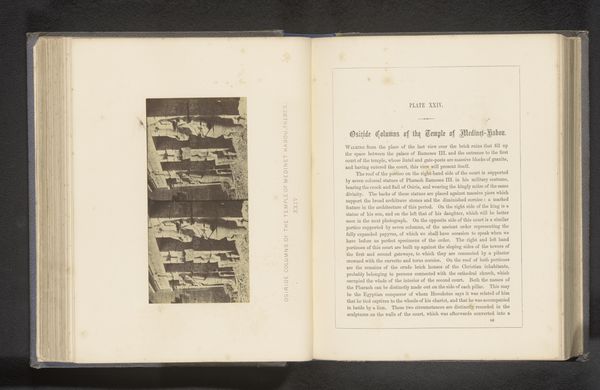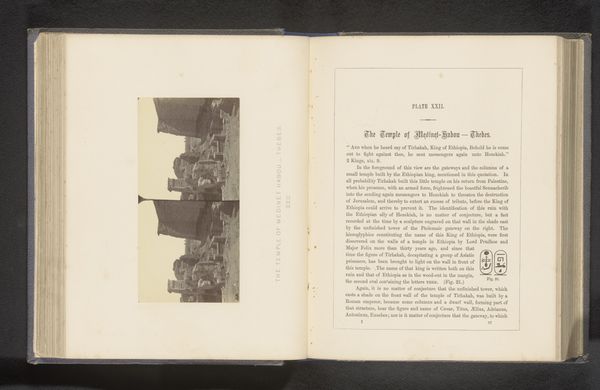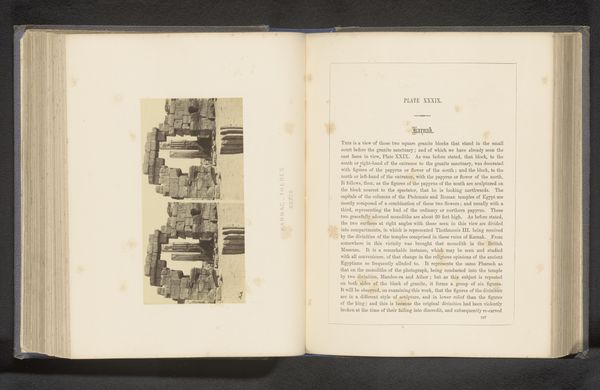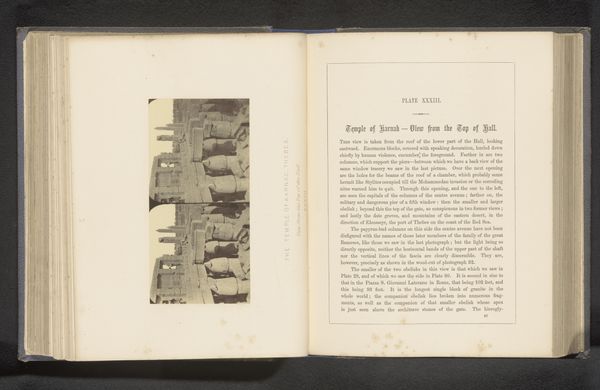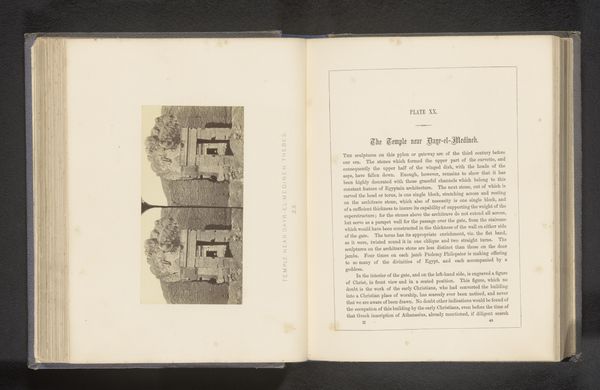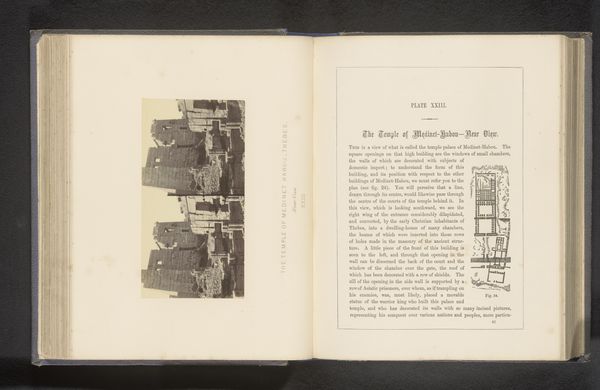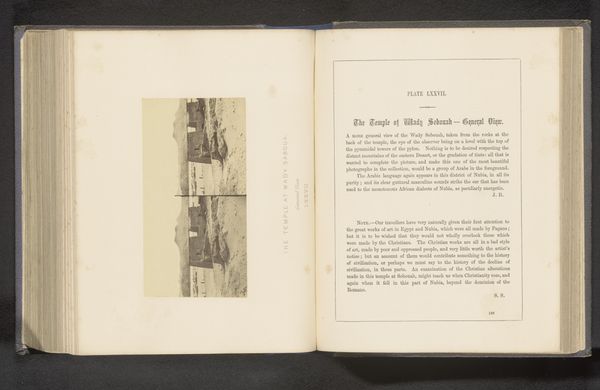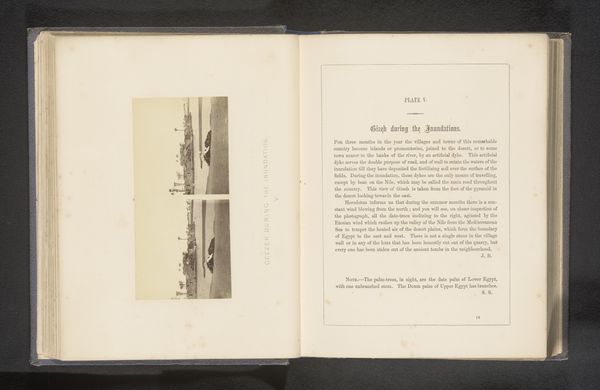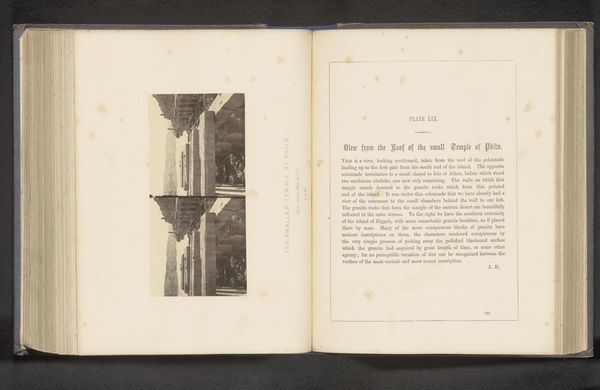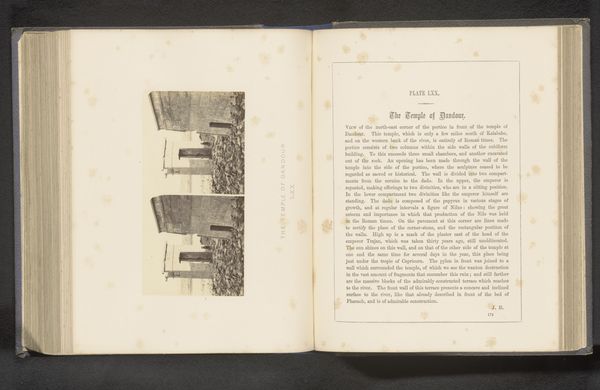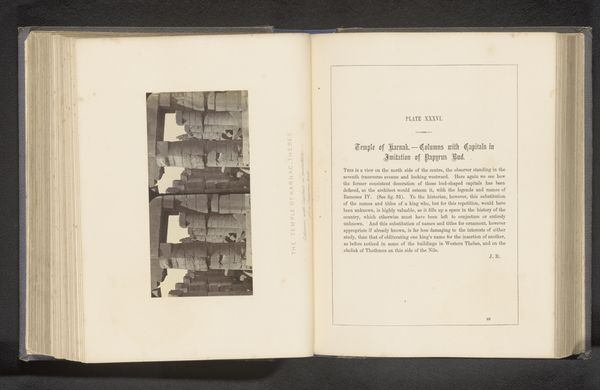
print, photography, site-specific, albumen-print
# print
#
landscape
#
photography
#
ancient-mediterranean
#
site-specific
#
albumen-print
Dimensions: height 74 mm, width 144 mm
Copyright: Rijks Museum: Open Domain
Curator: This photograph, "Pyloon bij de tempel van Isis te Philae," taken by Francis Frith before 1862, shows a landscape view of the temple ruins. What strikes you about it? Editor: The sheer scale of the pylons is overwhelming, even in this photograph. There’s a sense of enduring power, but also the weight of history bearing down. What do you see in this piece beyond just the aesthetic qualities? Curator: I see a dialogue, or rather, a tension between the grand narrative of empire and the often-silenced voices of the colonized. Frith, as a Western photographer, documents this ancient Egyptian structure, but his lens is inherently shaped by his cultural context. How does his presence, his act of photographing, contribute to a Western gaze on a non-Western subject? Editor: That's an interesting point. So, it's not just a picture of a temple, but also a record of a power dynamic? Curator: Precisely. Consider how the photograph may have been used. It could reinforce notions of Western superiority, a visual claim to cultural heritage. Does Frith engage with the local community? Whose story is being told here, and perhaps more importantly, whose is omitted? Think about the context of colonialism, the era in which this photograph was taken. Editor: So by showing these imposing ruins in what was then the early days of photography, is Frith also participating in a kind of cultural appropriation, defining the narrative for a Western audience? Curator: Absolutely. It becomes vital to examine these historical images critically, recognizing their embedded ideologies. We need to consider who controls the visual record and how it impacts our understanding of the past. We are not just viewing a relic, we are deconstructing the lens of the colonizer and understanding our responsibility to represent its history. Editor: This photograph makes me consider the role of the artist and viewer in understanding visual language and power structures. I had not approached it this way. Thank you. Curator: And thank you for prompting me to reflect! It’s by questioning, and critically engaging with images, that we expand our perspectives and move toward a more nuanced understanding of art history.
Comments
No comments
Be the first to comment and join the conversation on the ultimate creative platform.

